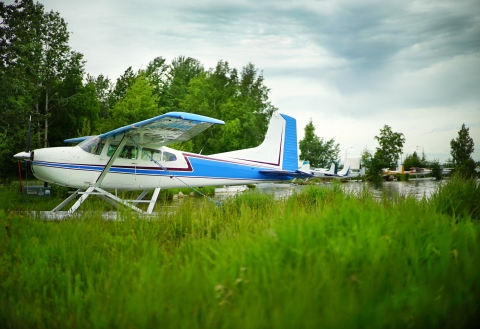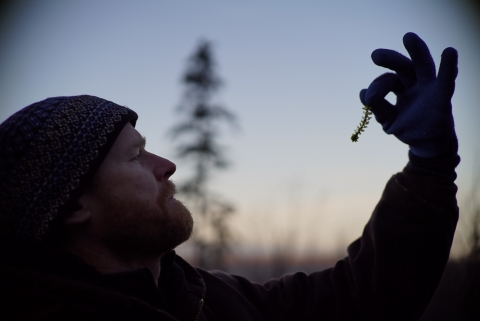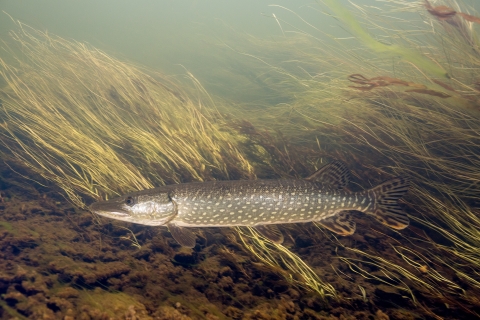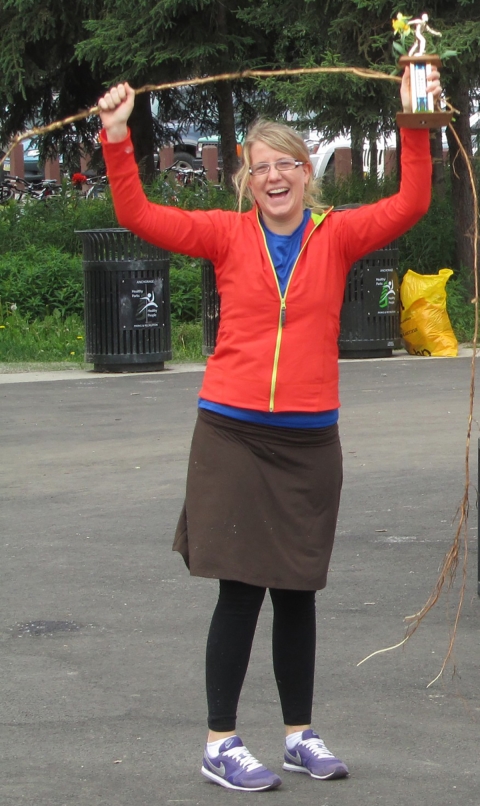“Fewer people will want to visit the beauty that is Alaska if they come all the way up here only to see the same pile of weeds they have in their own backyard”
Pete Johnson makes a good point. He’s an agronomist with the Alaska Department of Natural Resources’ Division of Agriculture.
Worldwide, invasive species invasive species
An invasive species is any plant or animal that has spread or been introduced into a new area where they are, or could, cause harm to the environment, economy, or human, animal, or plant health. Their unwelcome presence can destroy ecosystems and cost millions of dollars.
Learn more about invasive species are one of the biggest threats to native species and biodiversity. They cost the United States billions of dollars in damages every year and Alaska is increasingly at risk.
In addition to Pete, we asked a few Alaska experts to weigh in on this issue. These folks took us up on the offer:
Tammy Davis — Invasive Species Program Coordinator for the Alaska Department of Fish and Game’s Division of Sport Fish.
Aaron Martin — Invasive Species Program Coordinator for the U.S. Fish & Wildlife Service in Alaska.
Rob Massengill — Fisheries Biologist for ADF&G’s Division of Sport Fish
Why should people — not just those that live here but everyone — care about invasive species entering and spreading across Alaska?
Aaron: Alaska has some of the most pristine and intact ecosystems on the planet that support some of the biggest commercial fisheries in the world. We have amazing fishing, hunting, and sightseeing opportunities here. If we don’t proactively confront invasive species, these are at risk. It’s not a matter of if invasive species will show up in Alaska. It is a matter of when. And how prepared we are to find and eradicate them early before they have significant impacts on the things we value.
Generally, what makes a species “invasive”?
Tammy: organisms areconsideredinvasive if they aren’t native to (from) the area and their introduction causes or is likely to cause economic or environmental harm or harm to human health.
What is something people might be surprised to learn about invasive species in Alaska?
Aaron: Geographic isolation doesn’t insulate us from this issue anymore. We already have invasive species in Alaska, and there are many pathways for others to get here. In fact, pathways and suitable habitats are increasing rapidly. Recent work has already identified and ranked over 50 marine invasive species and highlighted the high risk of introduction to many of Alaska’s western ports (like Dutch Harbor and Kivilina) from shipping vessels traveling from ports in South Korea, China, Russia, Central America, New Zealand, and the contiguous United States. An infestation in Alaska puts the rest of the western seaboard at risk and vice versa. However, we have a chance to stay ahead of introductions by increasing awareness and addressing infestations while they’re still contained to relatively small areas.
What invasive species should Alaskans and visitors be concerned about and why?
Tammy: Elodea— an aquatic plant —has been detected from Cordova to the Kenai Peninsula to Anchorage and up to Fairbanks. It’s easily spread by plant fragments, on watercraft and float planes.
Pete: Elodea forms thick mats and can decrease water flow speeds in salmon streams causing sedimentation — this can either cover existing salmon eggs or destroy the spawning beds prior to the spawn. It can also impede boat and float plane travel in infested lakes and sloughs, making maneuvering difficult — this can pose a safety hazard.
Tammy: Northern Pike is another. This fish is native to most of Alaska in waterbodies north and west of the Alaska Range. However, people illegally introduced pike to Southcentral Alaska where they aren’t native. As effective top predators, pike have had devastating effects on native and stocked fisheries, with salmonids heavily impacted in Kenai Peninsula and Susitna drainage waters.
Tammy: Didemnum vexillum — what a name! Because its scientific name is such a mouthful I call it Dvex which rolls of the tongue better. Dvex was found in Whiting Harbor, Sitka in 2010. It’s a colonial tunicate that lives on hard substrates in marine environments. It grows quickly and, in addition to the usual means of reproduction, it has a unique strategy for expanding its area of establishment by cloning itself! Like other successful invaders, Dvex has few predators in Alaska. It can grow over and foul docks, piers and in-water infrastructure. More importantly, when Dvex is established on the seabed, as it is in Alaska, it can grow over and smother non-motile native species that live on the seafloor.
Zebra and quagga mussels are also a big concern. They haven’t been detected in Alaska…yet. Since being detected in Lake Mead in 2007, however, they have continued to spread. New populations were detected in Montana in 2016 which means they are moving closer to Alaska. These mussels are easily spread when they are juveniles and not easily seen.
Aaron: It’s a hard one to answer because there are so many that are already in the lower 48 states and have the potential to get to Alaska through shipping, tourism, and the aquarium trade. We’re in the process of evaluating the suitability of Alaska’s freshwater habitats to support several hundred species that have caused significant impacts throughout the world. We’re also trying to understand the pathways of how those species might get to those suitable areas. This will help us better determine what species we need to be most concerned about and where we should be looking for infestations. We also need to work together to minimize the likelihood of invasive species getting here in the first place.
If I had to pick three I’d probably say Elodea, quagga and zebra mussels, and green crabs. We know what these species can do to aquatic ecosystems based on first-hand experience or the impact they’ve had in the lower 48 states and Canada. One of the alarming things about the mussels and green crabs is that their range expansion west and north has continued even in the face of highly coordinated prevention and outreach campaigns.
How do invasive species threaten Alaska’s fisheries? Public lands? Ways of living, traditions, food security? Economy?
Rob: Invasives can directly impact Alaska’s native fisheries though predation, competition, disease transmission or by changing the habitat. They can cause losses to wild native fish and wildlife of economic importance like salmon and moose which are vulnerable to deer ticks. Invasive species can also lower property values, like when invasive plants choke out a lake. Some invasive plants and parasites threaten agriculture and forestry resources.
Aaron: Invasive species can change the beauty of our forests, rangelands, and waterbodies from what we fell in love with in the first place. Aquatic invasive species also impact the type of gear we can use for fishing — for example felt-soled boots aren’t allowed here anymore. They increase the time we have to invest cleaning and decontaminating our gear. And we all have limited time.
Pete: Aquatic invasive Elodea can decrease water flow speeds in salmon streams causing sedimentation. This can either cover existing salmon eggs or destroy the spawning beds prior to the spawn. This destroys fisheries both commercial and recreational. Elodea can also impede boat travel and float plane travel in infested lakes and make maneuvering difficult, which becomes a safety hazard.
What are common ways invasive species are entering the state? Spreading once they’ve entered?
Tammy: While natural dispersal of invaders can result in new populations, human activities are by far the greatest vector for moving invasive species around. People unknowingly transport them on their boats, gear and equipment to new areas all the time. Marine invasive species can be spread on the hulls of vessels and in the ballast water of ships. Others intentionally release them into the environment [pike and Elodea are good examples of this].
Rob: They can hitchhike on boats, vehicles and freight. Some are sold by pet and plant vendors. Many invasive plants do well in disturbed habitat associated with development. Creating travel corridors (roads, trails) usually results in colonizing invasives.
What resources are needed to stop invasive species from entering the state? to stop them from spreading once they’ve already entered?
Pete: The best long term resource needed to stop the spread of invasive species is education. By stopping people from planting something or spreading a non-native species we can reduce the occurrence of an “escape” to non-native areas.
Tammy: Anyone entering the state should clean their clothing, gear, equipment and watercraft before entering the state. Pets and other plants and animals should never be released into the wild. Firewood and wood products should be purchased where you will use it rather than brought into the state.
Rob: Money and inter-agency planning is needed for monitoring, public education, and timely responses to infestations.
Aaron: We really need to become more organized and strategic in how we’re dealing with invasive species. There are very limited resources available in Alaska. Aligning efforts, and prioritizing what and where we focus will be the most beneficial first step. We need more information describing the pathways of invasive species so we can better prioritize where we put the limited resources we have. We also need to raise awareness about invasive species in Alaska, what’s at stake, and what people can do to help.
What are some efforts being undertaken this year to prevent/eradicate infestations?
Rob: Elodea eradication efforts are underway at various lakes. There are also ongoing public awareness campaigns being carried out by various entities like the Kenai Watershed Form, U.S. Fish & Wildlife Service, and state agencies.
Tammy: The Alaska Department of Fish and Game has partnered with federal, state, local and tribal entities to eradicate northern pike from most waters on the Kenai Peninsula and the Anchorage Bowl. Work continues in the Mat-Su.
How can people help?
Tammy: Boaters: please remember to clean, drain and dry your watercraft between waterbodies. Everyone should keep their eyes peeled when outdoors and report invasive species on our Invasive Species Reporter or by calling the Invasive Species Hotline: 1–877-INVASIV. Don’t transport and release nonnative fish to waters of Alaska or transport native fish from one body of water to another. It’s illegal.
Aaron: Understand what to look for and where, then report things that don’t look right. Be a conscientious hobbyist — think about what species you may be buying from a local or online pet store or bait shop and consider the negative impacts those species may have if they get loose. Be a conscientious tourist — if you are traveling abroad or within state from an area with invasive species make sure to clean, drain, and dry your equipment.
Rob: If you see an invasive species, report it. Don’t transport live fish. Clean, drain and dry equipment and boats before leaving a waterbody. Buy certified weed-free seeds and don’t grow plants that could become invasive. Use weed-free fill and gravel for development projects.
Tammy: There are a lot of organized weed pulls and clean up events that are rewarding. Share what you know about invasive species with friends, family and others.











